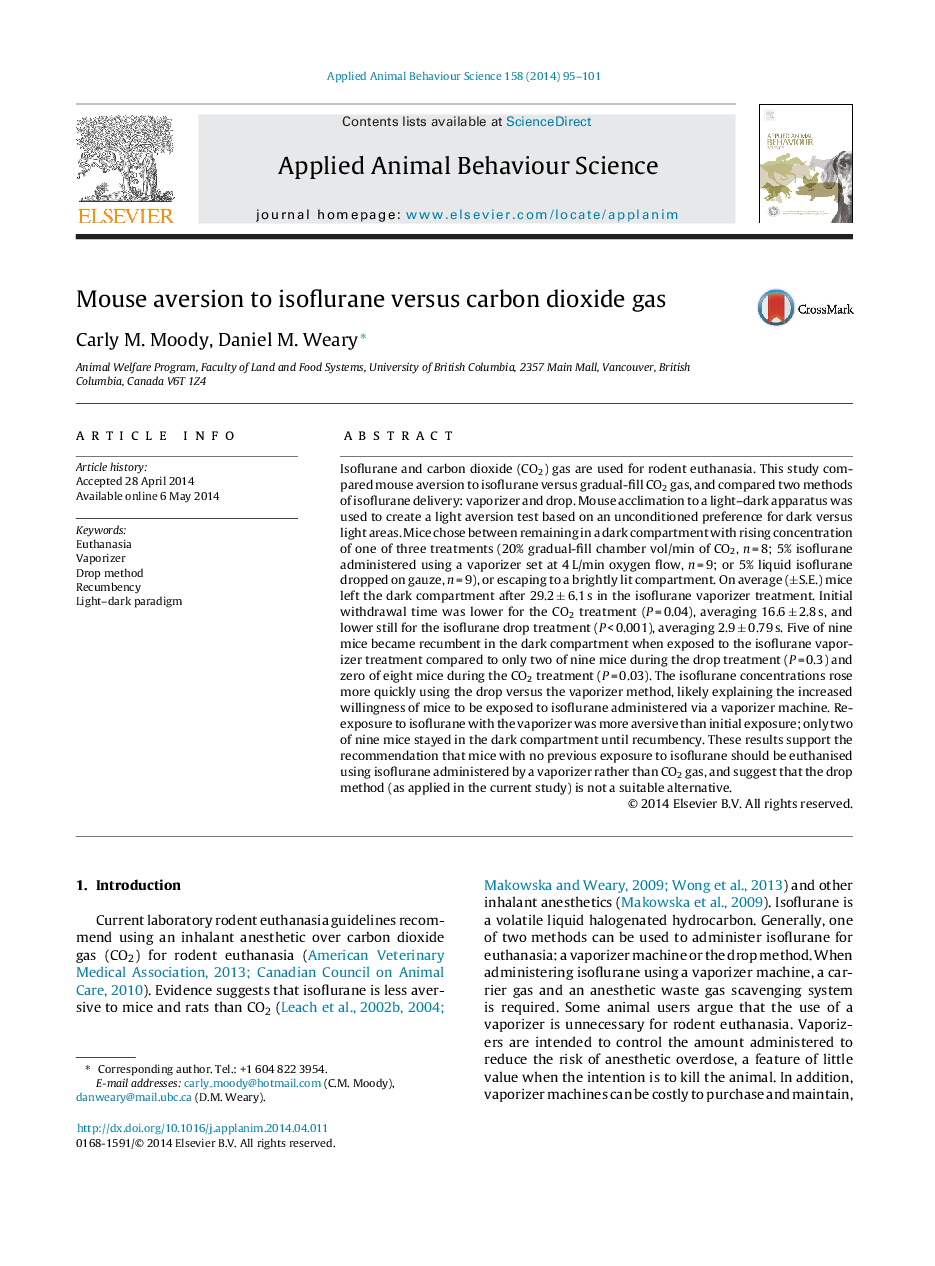| کد مقاله | کد نشریه | سال انتشار | مقاله انگلیسی | نسخه تمام متن |
|---|---|---|---|---|
| 4522571 | 1625348 | 2014 | 7 صفحه PDF | دانلود رایگان |
• Exposure to isoflurane via a vaporizer is less aversive to mice than carbon dioxide.
• Mice are more willing to be exposed to isoflurane via a vaporizer than the drop method.
• Mice find isoflurane re-exposure more aversive than initial exposure.
Isoflurane and carbon dioxide (CO2) gas are used for rodent euthanasia. This study compared mouse aversion to isoflurane versus gradual-fill CO2 gas, and compared two methods of isoflurane delivery: vaporizer and drop. Mouse acclimation to a light–dark apparatus was used to create a light aversion test based on an unconditioned preference for dark versus light areas. Mice chose between remaining in a dark compartment with rising concentration of one of three treatments (20% gradual-fill chamber vol/min of CO2, n = 8; 5% isoflurane administered using a vaporizer set at 4 L/min oxygen flow, n = 9; or 5% liquid isoflurane dropped on gauze, n = 9), or escaping to a brightly lit compartment. On average (±S.E.) mice left the dark compartment after 29.2 ± 6.1 s in the isoflurane vaporizer treatment. Initial withdrawal time was lower for the CO2 treatment (P = 0.04), averaging 16.6 ± 2.8 s, and lower still for the isoflurane drop treatment (P < 0.001), averaging 2.9 ± 0.79 s. Five of nine mice became recumbent in the dark compartment when exposed to the isoflurane vaporizer treatment compared to only two of nine mice during the drop treatment (P = 0.3) and zero of eight mice during the CO2 treatment (P = 0.03). The isoflurane concentrations rose more quickly using the drop versus the vaporizer method, likely explaining the increased willingness of mice to be exposed to isoflurane administered via a vaporizer machine. Re-exposure to isoflurane with the vaporizer was more aversive than initial exposure; only two of nine mice stayed in the dark compartment until recumbency. These results support the recommendation that mice with no previous exposure to isoflurane should be euthanised using isoflurane administered by a vaporizer rather than CO2 gas, and suggest that the drop method (as applied in the current study) is not a suitable alternative.
Journal: Applied Animal Behaviour Science - Volume 158, September 2014, Pages 95–101
